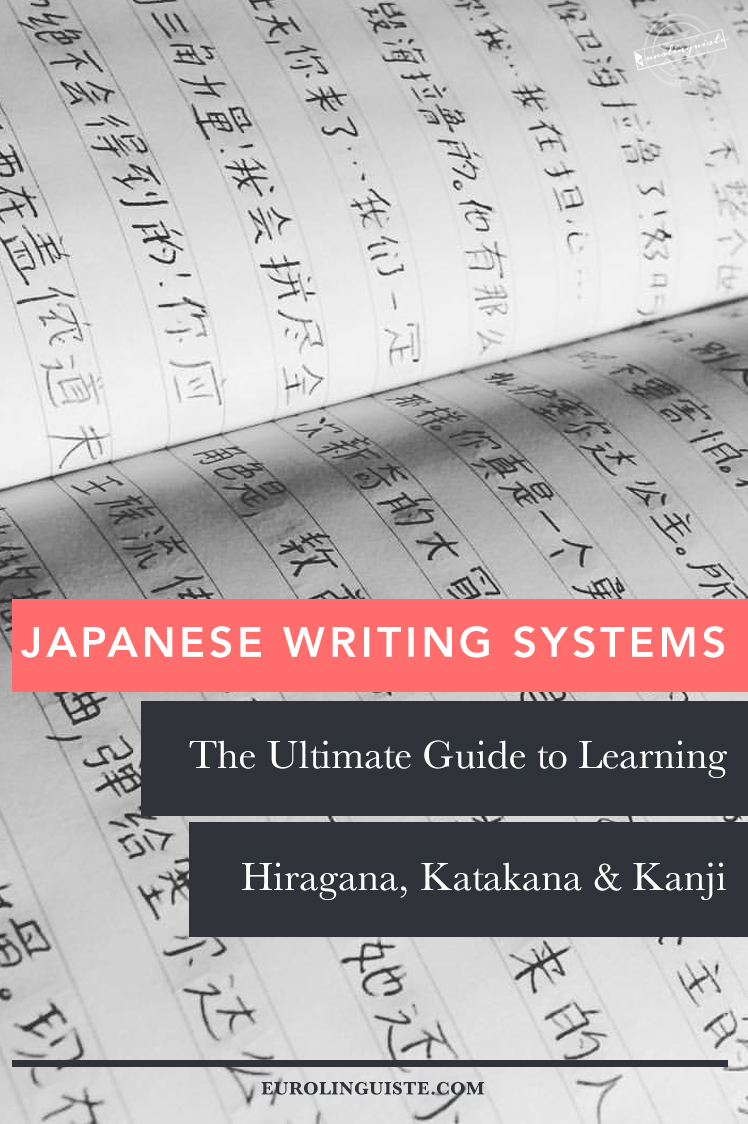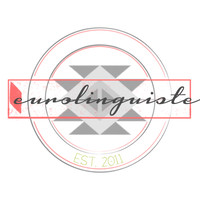The Ultimate Guide to Japanese Writing Systems: Learning to Read Hiragana, Katakana and Kanji

My name is Shannon Kennedy and I'm the language lover,…
I know what you’re thinking. Japanese has three – sometimes four – writing systems. Where do you start?
As I shared in one of my earlier Clear the List posts, I recently took on what I think will be my last language – Japanese.
I wanted to do things differently this time, so I decided to take a conversational approach to the language, meaning I’d focus on speaking and listening. But I quickly ran into a major obstacle – the Japanese writing systems.
Namely Hiragana and Katakana.

Don’t Avoid Learning Your Language’s Writing System
Initially, I thought I could put off learning to read in the language. I figured that because my focus was on speaking and listening, that I could worry about it later.
I tried to avoid learning them, writing everything down in Romaji. But as I progressed, ignoring learning to read in Japanese wasn’t be something I could do for long. If I really wanted to dive into different resources and maximize my study time, I needed to learn the Japanese writing systems.
So I decided to just go for it and get it done. I mean, I had learned to read and write in Korean, Russian, Arabic and even Chinese at different points, so why should Japanese be any different?
For one big reason.
Japanese isn’t like learning to read in Korean, Russian, Arabic, or Chinese because it has not one, not two, not three, but FOUR different writing systems that are all used concurrently.
Why?
Because they each serve different functions.
The Four Japanese Writing Systems
Taking on several new writing systems for one language can seem like an impossible project. Why could a language possibly need to write with three or four different systems?
The answer is reasonably logical.
Prior to the 1800s, Kanji, Hiragana and Katakana were each used separately. After the Meiji Restoration, however, the government made a decision to simplify Japanese writing and the three were combined, each with a different purpose.
Here are each of the writing systems and how they are used.
Kana
The first two writing systems are each one half of what is known as Kana. Kana are phonetic symbols – representations of pronunciation – and the systems are Hiragana and Katakana. They are known as syllabaries. This means that each character represents a specific sound rather than a specific consonant or idea.
Hiragana
The first Japanese writing system I’d like to touch on is Hiragana. It’s often the first that new learners of Japanese are advised to learn. Hira- means ‘ordinary, informal, easy, cursive’, and in the case of Hiragana, it is ‘ordinary cursive kana’.
Hiragana are derived from Chinese characters. Basically, they are simplified versions of characters. For example:
安 an -> あ a
Hiragana includes 46 characters made up of 5 singular vowels, 40 consonant-vowel pairs, and 1 singular consonant. It first made its appearance in the 5th century, but it was not widely accepted after it was first developed. Educated men preferred to write using the Chinese-based writing system, so Hiragana was first picked up by women who did not have access to the same education as men.
What is Hiragana used for?
Today, Hiragana is used by everyone as a key part of writing in Japanese. It is used to write okurigana (suffixes following kanji), grammar, function words like particles, and Japanese words for which there are no kanji.
Another important use of Hiragana is to write furigana, a reading aid that offers the pronunciation of kanji characters to readers when the kanji may be obscure, formal, or in readings for a younger/learner audience. For example 寿司 can be written as すし (sushi).
Hiragana pronunciation, unlike other writing systems, has incredibly consistent pronunciation. There are just three exceptions:
* The topic particle は // Normally pronounced ha, this character becomes wa when used as a topic particles.
* The object particle を // Normally this character is pronounced wo but it becomes o when it used as an object particle.
* The directional particle へ // This character is pronounced he except when it is used as a directional particle.
Katakana
Kata- means ‘one side, partial’ and this system too is based on Chinese characters, but rather than simplified versions of them, Katakana or parts of characters. For example:
伊 i -> イi
What is Katakana used for?
Katakana is used for borrowed words (usually those added after the 19th century). This would be words like:
computer コンピューター konpyūtā
hamburger ハンバーガー hanbāgā
internet インターネット intānetto
beer ビール bīru
It’s also used for the names of certain animals (zebra シマウマ shimauma), onomatopoeia and in telegrams.
Thankfully, Katakana is not much more difficult than Hiragana. Plus, 46 of its 48 characters represent the same sounds as Hiragana.

Kanji
Chinese writing, or Kanji, came to Japan around the 4th century. At first, characters were monosyllabic – this meant that each Chinese character represented a certain sound. Later, characters were ideologically used, so they lost there reference to Chinese pronunciation.
For example, 久尔 ku-ni became 国 kuni
This change is also why many kanji have more than one pronunciation, their kun-yomi (Japanese readings of Kanji) and their on-yomi (Chinese-based readings of Kanji).
The average educated Japanese person is said to know around 3,000 Kanji. The government suggest list includes around 2,136 kanji (with 4,394 on- and kun-yomi readings).
What is Kanji used for?
Vocabulary. Compared to the other systems, this is pretty straight forward.
An Honorable Mention – Romaji
The fourth Japanese writing system is Romaji ローマ字. This literally means ‘Roman letters’ and it is the romanization of Japanese.
This system is most often used by learners, but it can occasionally make an appearance in Japanese texts. Most notably, many Japanese scholars considered replacing the other Japanese systems with Romaji during the Meiji period, but it never caught on.
There are three popular systems of romanization: Hepburn, Nihon-shiki, and Kunrei-shiki. This explains why some courses may write arigato while others use arigatou. And it also further strengthens my argument to learn Kana asap – it leaves little doubt as to how words should be pronounced when you read them in their original system.
So why does Japanese use three (and sometimes four writing systems)?
* Because Japanese doesn’t use spaces, so reading something in just Hiragana or Katakana would be extremely difficult.
* Japanese has a lot of words that sound the same. Kanji helps differentiate these words by using different characters.
A few words worth paying attention to:
* dakuon 濁音// a voiced sound or hardened sound. In Japanese k, s, t, and h become g, z/j, d/z, b, and p. This change is noted with a diacritical mark on the upper right side of the character. For example: こko -> ご go and ひ hi -> ぴ pi
* yoon 拗音 // the combination of a consonant and a y* character. When this happens the y* character (either ya, yo, yu) is written smaller. For example: ひゃ hi + ya = hiya, りょ ri + yo = ryo
* sokuon 促音 // a double consonant created by adding っor ッ. For example ポッキー (Pocky) which in romaji is actually pokki.
* kutoten 句読点 // the name for Japanese pronunciation.
My Process Learning Each of the Japanese Writing Systems
While I’m no stranger to learning new writing systems, I must admit I was a little intimidated by Japanese. With Kana and Kanji, especially, my hands were certainly full. I devised a plan.
Writing the Japanese Alphabets Out By Hand
I started out by writing Hiragana out by hand using an incredibly helpful workbook from Tuttle Publishing.
Why did I start with Hiragana? Because in everything I read, it was recommended that I learn Hiragana first, so that’s what I did.
But then I realized that there are 46 Hiragana letters. And I quickly realized that I needed to do more. Because while I felt like I became pretty decent at writing them, I had trouble associating them with their syllables (or sounds) and I knew I’d need to do something different.
Repetition and writing by hand just wasn’t going to cut it this time around.

Using Memrise to Learn the Japanese Writing Systems
I then started the Japanese Memrise course. I thought, “Perfect! It starts by teaching you Hiragana after a few basic words.” It seemed just right for my goals.
I began studying, but it began to introduce full words to me in Hiragana too quickly and I realized I still didn’t have a good grasp on the alphabet.
Back to the drawing board I went, and into a Hiragana-Katakana ONLY Memrise course I dove. Finally, I hit on something that worked.
But there was still one problem. Within the context of Memrise, I was able to remember characters, but outside of the app, I still had a hard time recognizing them.
Giving It a New Context with Drops
One of the best ways to remember something – for good – is to give it a new context. When you see a word in one place, then another, it increases the odds that you’ll not only recognize it in a third context, but that you’ll also remember what it is.
The same works for alphabet characters.
It’s a bit more difficult to give individual letters a new context, so Drops, even though it is another app, did this for me excellently. It gave me a new visual context and style of practice learning the syllabaries, and helped me take a huge step forward.
And finally…
Reading Even When You Don’t Understand
Even when you don’t understand the words you’re reading, it helps to start working through readings in your target language. You may just be sounding things out, but it will help you build reading fluency (and speed) in the future when you do understand.
Plus, as I said, it gives you a new context to recall the characters.
Resources for Learning the Japanese Writing Systems
Memrise // Memrise is a flashcard app that has pre-built flashcard decks available to you. These include Hiragana, Katakana, and Kanji study decks. Plus, you can always create your own study decks.
Drops // Drops is another excellent vocabulary app with a beautiful interface. It’s a flexible option with tons of well-curated vocabulary lists.
Remembering the Kanji // The go-to book for learning Kanji.
Tofugu // A popular website for Japanese resources and learning. They have a thorough article for both Hiragana and Katakana.
JapanesePod101 // In addition to a series that teaches you Kanji, they have a thorough set of videos that will teach you both Hiragana and Katakana.
Learning Japanese Hiragana and Katakana // An excellent workbook from Tuttle Publishing with the history of the characters, tons of practice space and Japanese culture-specific vocabulary. Read the review.
What about you?
Are you studying Japanese? What tools and techniques did you use to learn Kana and Kanji? I’d love to hear about them in the comments.

My name is Shannon Kennedy and I'm the language lover, traveler, and foodie behind Eurolinguiste. I'm also the Head Coach of the Fluent in 3 Months Bootcamp, co-founder of Women in Language, and former Resident Polyglot at Drops.





